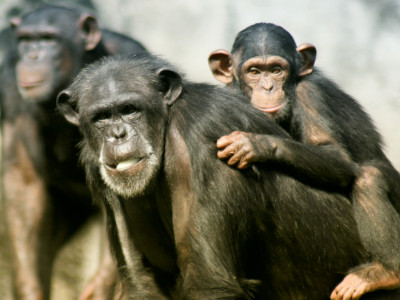Why are people prone to knee pain?

The knee is one of the most distinctive parts of the human body, allowing us to walk upright on two legs, but it is also a part of the body that becomes more painful and difficult to move as we age. A new study has revealed that the evolution of the human knee has a complex history, and that this history is also the reason why it is prone to pain and injury.
Easy to gain but hard to lose: the evolution of the knee sesamoid bones in Primates—a systematic review and phylogenetic meta-analysis | Proceedings of the Royal Society B: Biological Sciences
Why we haven't evolved better knees – new research
https://theconversation.com/why-we-havent-evolved-better-knees-new-research-238707

The knee not only enabled early humans to walk upright, but also distinguished Homo sapiens from extinct genetic relatives such as Homo erectus and Homo neanderthalensis (Neanderthals). Although the knee was present in our ancestors, it is possible that our ancestors did not suffer from problems such as arthritis, which causes knee pain.
A 2017 study of the remains of hunter-gatherers who lived up to 6,000 years ago found that knee osteoarthritis, which affects more than one-third of people over the age of 45 today, was likely not a problem at all in ancient times. The study suggests that many of the knee problems faced by modern humans are due to the sedentary lifestyles of industrialized societies, which have more than doubled in incidence.
Michael Bartoum, a lecturer in engineering at King's College London, UK, points out that the muscles that stabilize and protect joints have weakened, and the cartilage that cushions bones from rubbing together has become relatively weaker, as a result of humans moving much less than they used to. Past research has shown that even in the case of back pain, light exercise can help relieve pain and prevent it from recurring.
Why is exercise effective in relieving lower back pain? - GIGAZINE

However, the knee has complex biology that scientists don't fully understand. One of these is the sesamoid bones , which are tiny bones in the kneecap called the patella. But even after hundreds of years of research, little is known about their evolution, growth and development, and why they are present in some species and not others.
So Bartome and his colleagues conducted a systematic study of the evolution and development of the sesamoid bones in the knee, examining three sesamoid bones from 93 primate species, including non-human hominidae and our common ancestor.

Comparative analysis suggests that the presence or absence of sesamoids is highly structured and contains some phylogenetic signal. This means that the knee did not evolve to match a specific movement or environment, but that other information, such as body size or organ arrangement, may influence the presence or absence of sesamoids. Researchers speculate that humans have a unique evolution of sesamoids, which began with the origin of the Hominoidea , a group of primates that includes apes and humans.
In addition to the decline in physical activity, the increase in nutritional intake worldwide and the increase in human height and weight are also thought to be the reasons why the sesamoid bones in the knees have evolved in a unique way, making them more susceptible to osteoarthritis. 'We found that the knees did not evolve to suit the times in which we live, and that the bones that originally helped us walk are likely to have become the cause of knee problems that have become more severe as lifestyles have changed. The knee pain we feel is influenced by a more complex evolution than we might have imagined,' said Dr. Barthom.
Related Posts:
in Science, Posted by log1e_dh







